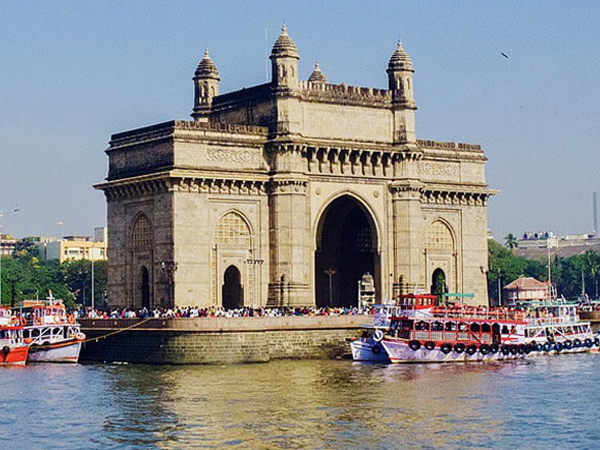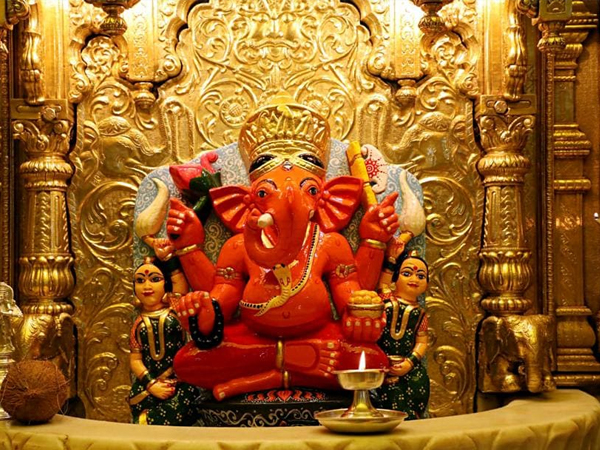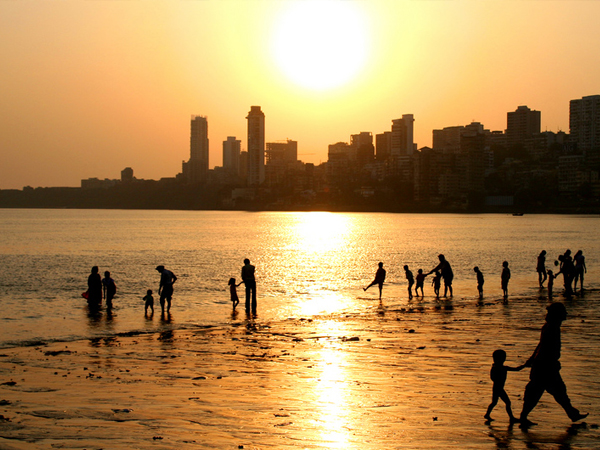Complete with the snow-capped mountains, the lush green forested hills, the valleys, the lakes and the fertile Terai plains, Nepal seems to have varied physical features much like its diverse ethnic-lingual groups of people. These groups – some natives, some arrived from other countries, together create a vibrant and vivid culture of the nation, which is similar in some aspects to the culture of its neighbouring areas like India and Tibet and with some unique and distinct features of its own. In this article, we are going to know about different exciting elements of Nepalese culture.
Customs and Traditions
Nepalis have their own customs and traditions each with its own significance. A lot of these are based on myths and superstitions, like belief in witches, ghosts and supernatural creatures and reliance on tantriks and shamans. They also indulge in animal sacrifices in their religious procedures. Some communities in Nepal have weird marriage traditions like getting married to a wood-apple and the sun, some have to marry their first-cousin, some their sister-in-law, and some people can even marry another man’s wife by paying a sum of money! It’s called Jari Vivaha.
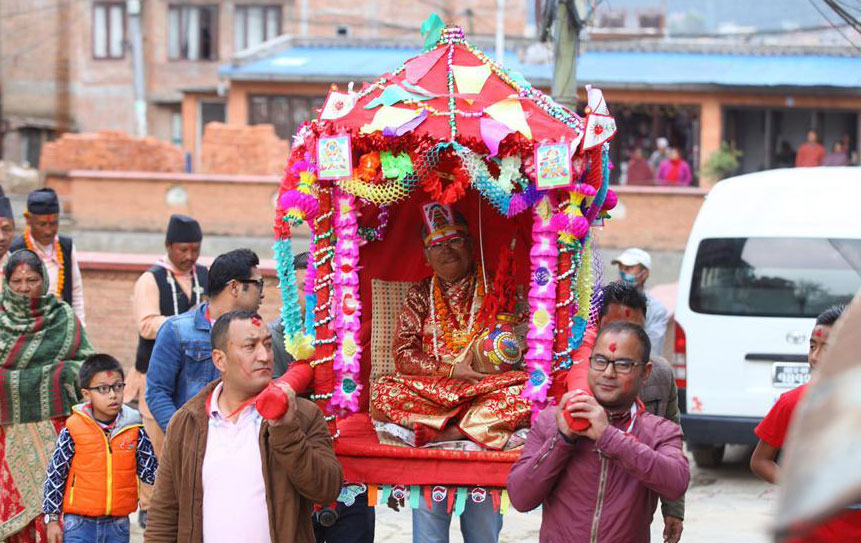
Another unique tradition is celebrating the birthdays of old people when they turn specific ages – 77, 1000 months, 88, 99 and 110 years. This one is called Janku. Some communities, especially those residing in the highlands, have an unusual way of dealing with the dead known as sky burial. Instead of cremating or burying the bodies, it is left to be eaten by vultures and crows.
Festivals of Nepal
Nepalis celebrate numerous festivals throughout the year, much like the Indians. Major festivals include Dashain (Nepali equivalent of Durga Puja) which marks the victory of Goddess Durga over the demon Mahishasura. It is one of the most anticipated festivals of the year and is celebrated by Nepali Hindus with great pomp and joy for fifteen days in the month of Ashvin (September-October). Tihar (Diwali), also called as Swanti and Yamapanchak by some communities, is another famous festival celebrated for five days. In addition to decorating the houses with lights, animals are also worshipped during this period.
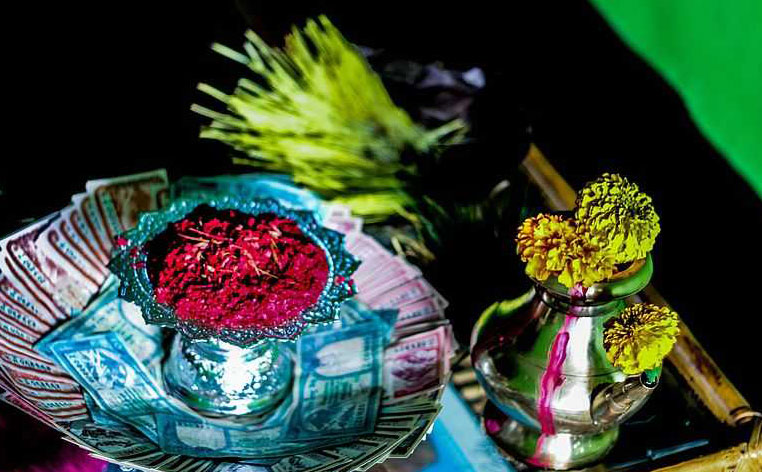
Other popular festivals include Phagu Purnima (Holi), Janai Purnima (Raksha Bandhan), Mahashivratri, Krishna Janmashtami and Gaijatra, which is a procession of decorated cows to commemorate the dead and also involves mask dance, mockery and traditional dance – Ghinta Ghisi. The celebration of festivals varies according to region and ethnicity. Some festivals like Buddha Jayanti and Indrajatra (a street festival involving mask dance, consumption of Nepali liquor – Raksi, worship of Akash Bhairab and young girls, all to pray for a good harvest in the upcoming year) are celebrated by Hindus and Buddhists together, thus indicating the great harmony between them.
Nepali Dance and Music
Nepal has a rich tradition of folk, as well as classical dances. According to Hindu mythology, Shiva, who is the God of dance in his Nataraja form, used to do his famous Tandava dance here in the Himalayas. Different communities have their own dance forms which are performed during various festivals, fairs and family occasions. Some folk dances include Dandi Naach which is a stick dance performed during Phagu Purnima, Dhan Naach which is performed by members of the Limbu community to celebrate the harvest of crops, Chandi Naach performed by the Rais during Udhauli and Ubhauli, Panchabuddha Nritya – a Buddhist dance that has to be performed by five people. An important classical dance form of Nepal is Bhairab Nritya, where the dancer dances dressed as Bhairab. Other dance forms include Khyali Naach, Gauna Nritya, Hanuman Nritya, Kaura Naach, Devi Nritya, etc.
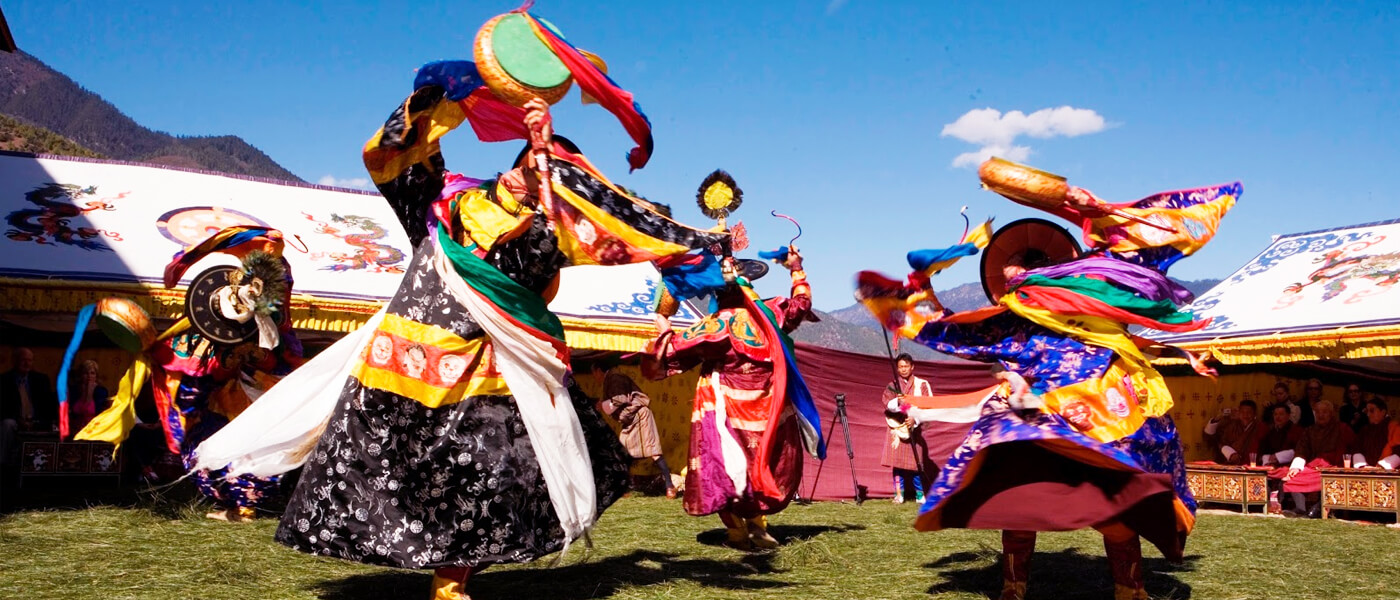
Music is also an important element of Nepalese culture. It has been a source of manifestation of their emotions, telling of stories and also a form of entertainment. Just like dance, Nepalese music is also classified according to the community – the Tamangs, Gurungs, Sherpas, Maithilis, Newas, Kirats, Magars and Tharus each have their own distinct music and singers. Musical instruments like Madal, Dhimey, Panchai Baja and Sarangi often accompany the songs. A particularly unique genre of Nepali music is Dohar, where there are two groups of people engaging in a sort of musical debate. Bhajans and Ghazals, though not indigenous to the country, are also sung. In recent times, modern music or Adhunik Geet and filmy music are also developing, and many Nepali bands engaging in western musical genres have emerged.
Art and Craft of Nepal
If you visit a monastery in Nepal, you may find its walls adorned with beautiful and vibrant paintings. These are actually Thangka or Paubha paintings, depicting Hindu and Buddhist deities. Although traditionally they have been important elements of Nepal’s culture, presently they are produced for the market as tourists love buying them as souvenirs.

Handicrafts in Nepal encompass a wide range of products including metalware, pottery, textiles, wood and stone crafts, paper products, goods made out of beads, bones, horns, leather, bamboo and so on. The list seems endless, implying that you will never fall short of products to buy when in Nepal! While some of these things like metal statues of Gods and Goddesses, religious items such as bells and vajra, wood carvings, lokta paper and silver ornaments are being made since the first civilisations began in the country, the rest are relatively newer items. Among textiles, Pashmina and garments made of yak wool are noteworthy. Nepali artisans and craftsmen have earned respect and admiration for their work from people all over the world.
Architecture
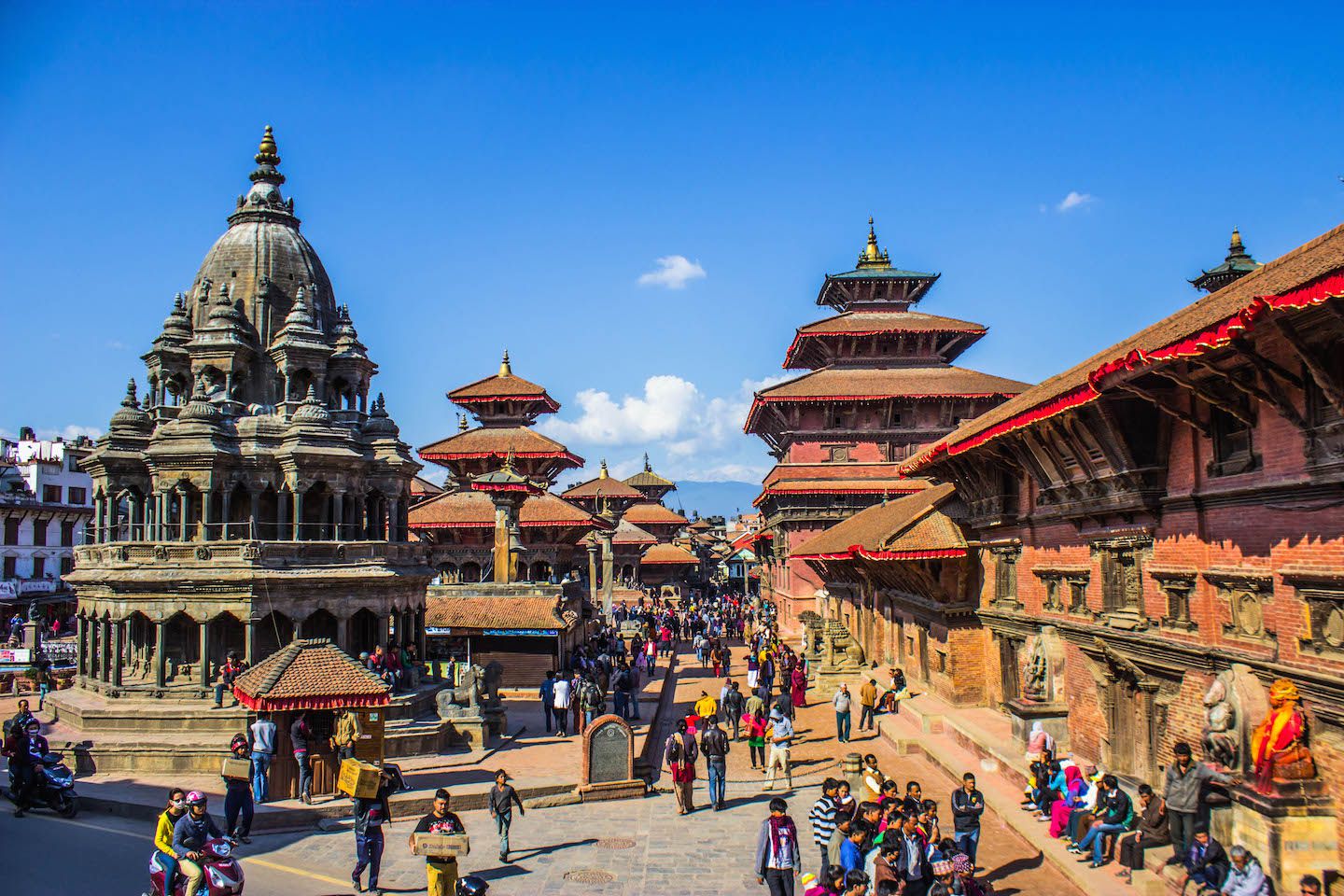
Nepalese architecture is characterised by two main styles – the tapering multi-storeyed pagoda style and the dome-shaped stupa style. The Pashupatinath Temple in Kathmandu which attracts a multitude of tourists, is one of the oldest examples of pagoda style architectures in the world, being built in the 1st century AD. It is even believed that a Nepali architect named Araniko was the first to introduce the pagoda style architecture in China. Other examples of this style include the Basantpur Palace and Changu Narayan Temple. Fine examples of stupa-style architecture are the famous Boudhanath and Swayambhunath stupas. Some stupas can also be spotted in Patan, built by emperor Ashoka in the 3rd century BC. The Shikhara style is another prominent style of architecture in the country – it includes a tall mountain peak-shaped tower containing stone or wood carvings. The Krishna Temple in Patan is an example of this style. In addition to these, the Newa style that originated from the Newaris and the Mughal style can also be observed occasionally.
Cuisine of Nepal
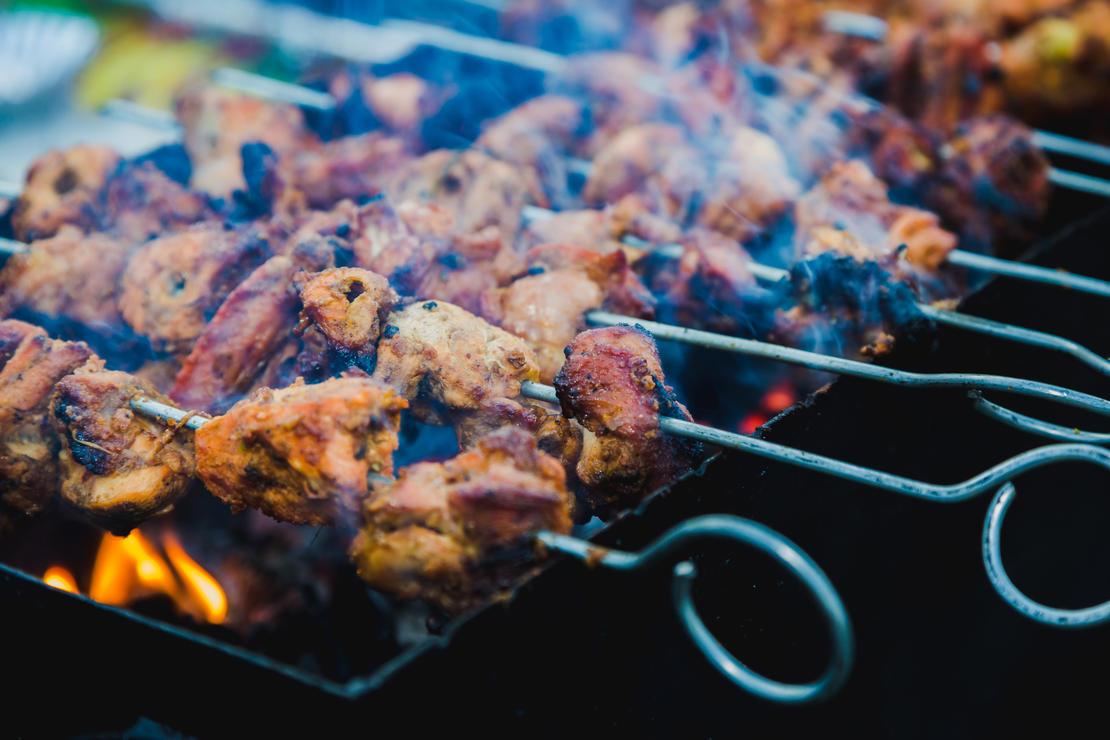
Nepali cuisine is heavily influenced by Indian, Tibetan and Chinese cuisines. Dal-bhaat is the staple food of all Nepalis irrespective of ethnicity. While bhaat refers to simple boiled rice, dal is a lentil-based gravy. This is often accompanied by a vegetable curry termed tarkari. Other than this, there are some variations in the food consumed by different ethnic groups and also depending upon the region. Like for instance, people residing in the mountainous regions may substitute rice for other grains like wheat, maize, millets, cornmeal or barley.
Other popular Nepali delicacies include Momo – dumplings filled with meat or vegetables, Thukpa – a noodle soup containing meat and vegetables, Sel Roti – a ring-shaped sweet and crispy snack made with rice flour and had during Dashain and Tihar, Dhindo – made with water and corn flour or maize or wheat and Gundruk – a dish made of dried and fermented green leafy vegetables. Dhindo and Gundruk are normally consumed together and sometimes called the national food of Nepal. Chatamari is the Nepali version of pizza, with a rice-flour base and toppings like meat, eggs and vegetables. Nepalis have a sweet tooth too; Yomari is a popular sweet made of rice flour with a sweet filling – sugarcane juice, condensed milk, etc. In modern times, Nepalis also enjoy having continental food items like pizza, pasta, burgers and sandwiches.
Traditional Attire
The traditional apparel worn by the Nepali people are the Daura-Suruwal for men and Gunyo-Cholo for women. The Daura is a type of double-breasted kurta worn on the upper body and fastened with eight strings, while the Suruwal is the trouser. It is worn with a type of cap called Dhaka Topi and sometimes with a jacket or waistcoat too. Gunyo-Cholo consists of a cotton saree which is draped like a skirt on the lower body and worn with a blouse or Cholo and lots of traditional jewellery. When a Nepali girl turns seven, there is a tradition of gifting her this dress to mark her coming of age. This dress is reserved for marriages, festivals and other special occasions.
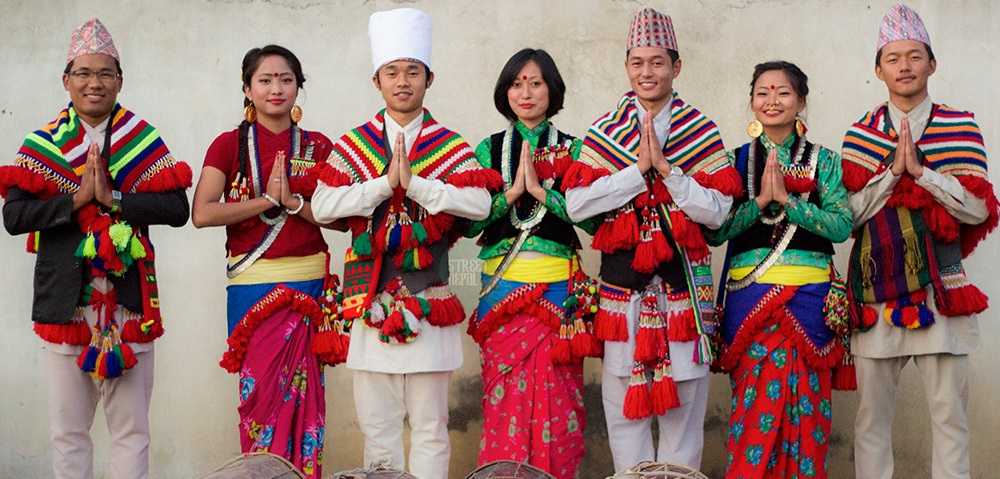
Dhoti and lungi are also worn by men, and sarees and kurta-suruwal by women. People from the Mewari community wear Tapalan- a long shirt for males, and females wear Haku-Patasi, which is similar to Gunyo Cholo but is worn along with a dupatta like cloth on the upper body. There are also regional variations in costumes like people residing in the northern mountainous regions wear heavy yak-woollen garments. Western influences can be observed nowadays in the clothing style of the Nepali people, especially in urban areas like Kathmandu.
Religion
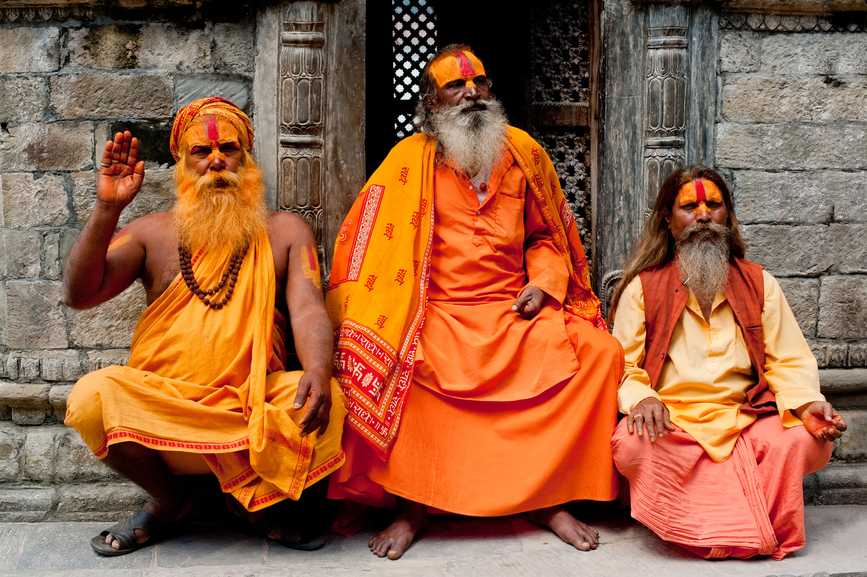
After officially being a Hindu kingdom for a long time, Nepal at present is a secular country giving equal importance to all religions and giving its citizens the freedom to practice the religion of their choice. Demographic data shows that the vast majority of Nepal’s population is dominated by Hindus – a whopping 81.3% of the people follow the religion, followed by Buddhists who cover 9%, Muslims 4.4%, Kiratis (religion of some of the native Himalayan tribes) 3%, Christians 1.4% and the remaining 0.9% is composed of Jains, Sikhs, Baha’is, Jews and also some people who do not follow any religion. Places of worship for all the religions exist in the country, and all the religions celebrate their own festivals. Great harmony and bonding are said to exist between the Hindu and Buddhist communities in Nepal to the extent that they share places of worship and celebrate festivals together. Lumbini in Nepal is, in fact, the birthplace of Lord Buddha and hence a very holy place for both the Hindus and the Buddhists.
Language and Literature
Although Nepali is the national and official language of Nepal, it is actually a multi-lingual nation with each ethnic group conversing in its own distinct tongue. As many as 123 languages are spoken in Nepal – the most spoken ones being Nepali, Maithili, Bhojpuri, Tharu and Tamang. Nepali language is written in the Devanagari script and has actually evolved from the ancient Sanskrit language.
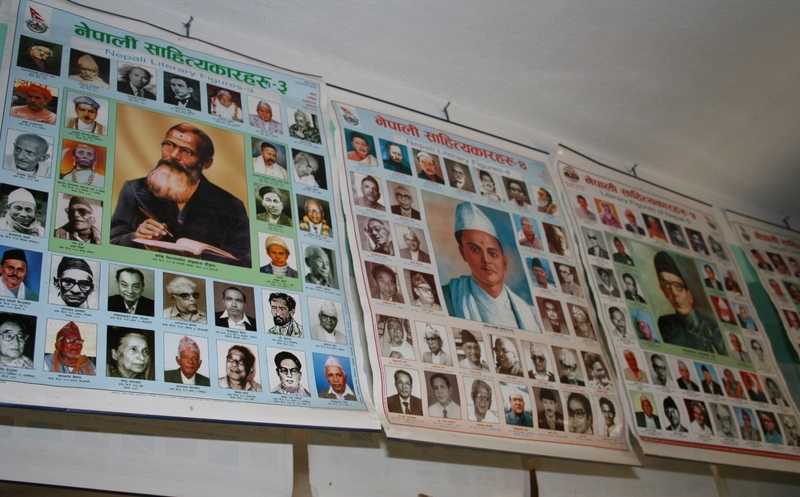
Literature began to develop only since the 19th century with some notable Nepalis like Laxmi Prasad Devkota, Bhanubhakta Acharya, Bal Krishna Sam, Motiram Bhatta, Parijat and many others making a remarkable contribution to Nepali literature. Lyrical poetry, tragic dramas and short stories are some common forms of Nepali literature, and they deal with themes like social issues faced by the people, patriotism and love stories.
Occupation
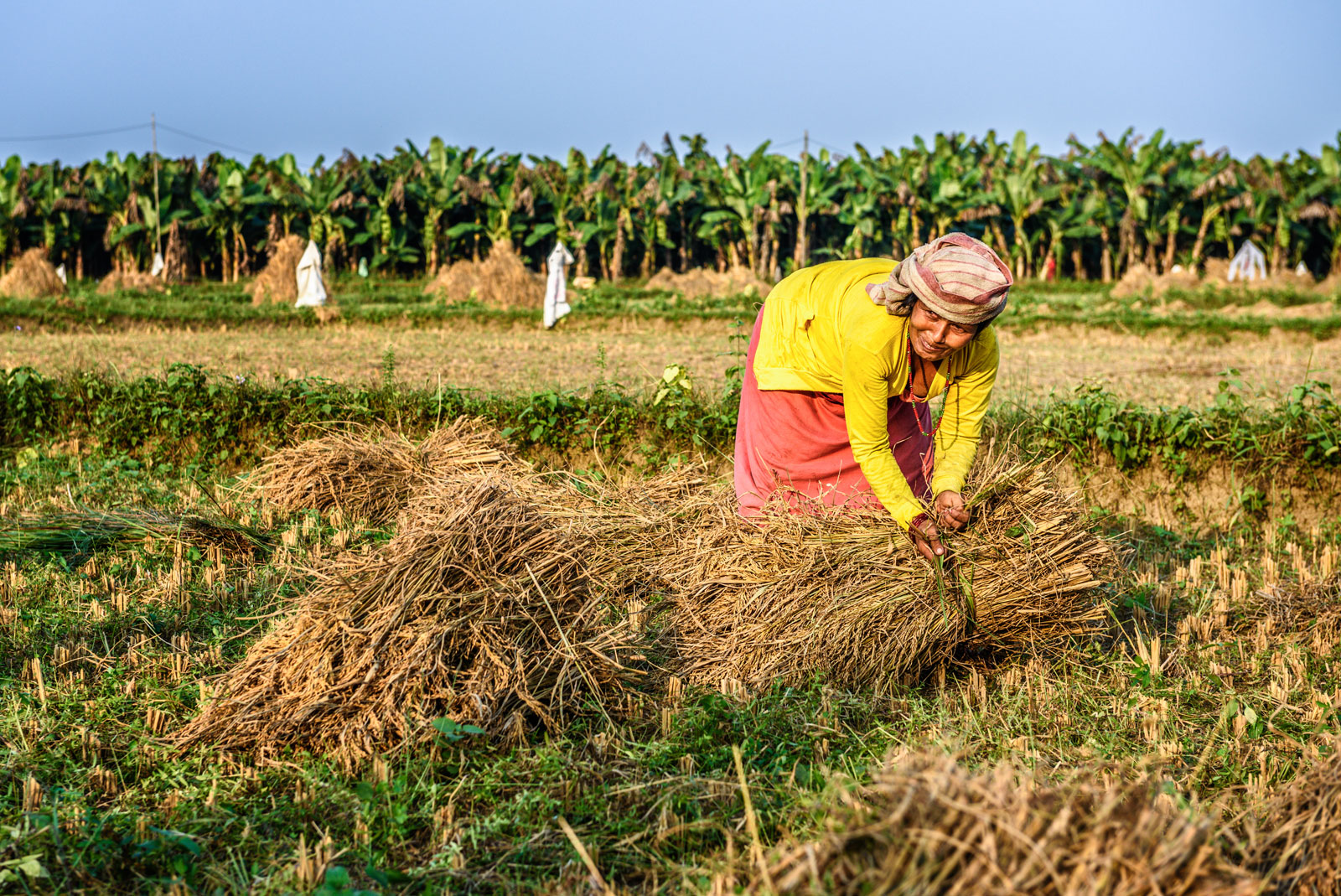
Nepal is an agro-based economy implying that a majority of its population (around 70%) is engaged in agriculture and related work. Most of the farming takes place in the southern Terai plains and also in some of the lower hilly areas. Fruits and vegetables, cereals like rice, wheat and maize, and tea are the main crops cultivated. The remaining 30% of the people are employed in the service sector and industries. You can already predict that tourism is an important industry in the country, being a pilgrimage site for Buddhists and Hindus, and not to forget the trekkers and mountaineers. Handicrafts constitute most of the exports and hence are a prime source of revenue for the economy, employing a lot of Nepalis. Apart from these, people are also employed in financial institutions, transport sector, construction sector, software sector in urban areas and engage in animal husbandry and fishery in rural areas.
That was all about the culture of Nepal. Despite having over a hundred different ethnic groups, there seems to be unity in diversity in the nation, thus truly making it a land of ‘Never Ending Peace And Love’.


